Chapter 79
OOC: Howdy all! Here's a brief look into comics ITTL. I'll be the first to admit that I'm woefully uninformed about details when it comes to comic history, so I would be happy to make changes or additions if you all think the chapter needs it.
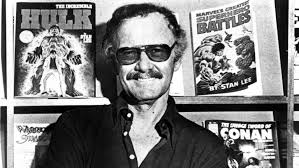
Above: Stanley Martin Lieber, better known by his pen and eventual legal name, Stan Lee, was one of the foremost writers and architects of the “Second Heroic Age” of Comics which ran roughly from 1956 - 1976.
In the aftermath of World War II, the popularity and circulation of comic books centered on superheroes began to experience a sharp decline. Heroes like the immortal Captain America and Superman who once dominated print pages and captivated the imaginations of young people across the country were afterward replaced in large part by dark, intrigue infused stories of crime and horror through the 1940’s and 50’s. Over time however, controversy began to arise as concerned parents’ groups and the media started to allege links between crime and horror comics and a rise in juvenile delinquency. The 1954 introduction of the Comics Code Authority to “regulate” the content of comics books may now seem like an antiquated exercise in McCarthyite censorship, but at the time it was taken as absolute serious business. In the wake of these developments, publishers began to venture back into the stupendous world of superheroes, a change which began with the publication of a new version of DC’s character the Flash in October of 1956. Initially skeptical of how successful superheroes could be after years in the relative wilderness, DC was completely caught off guard when the Flash became a big hit. In response, the company began to feverishly pump out story after story centering on old classics like Superman, Batman, and Wonder Woman, as well as their collaborative team: the Justice League of America. This shift in the industry: back toward the superhero genre and under the watchful eye of the CCA, led to the perception that a new era in comics had begun: it would be dubbed “the second heroic age”.
More than simply a return in popularity for superheroes, the Second Heroic Age also marked several other crucial changes in comics. DC Editor Julius Schwartz, who was largely to thank for the revitalization of the Flash in ‘56, was also a great fan of science-fiction, such as the works of Ray Bradbury, and strove to include more sci-fi elements in his company’s stories. It was during this period that science would overtake magic and religion as the source for superheroes’ powers, for instance. This change seemed natural, especially in an age which was rapidly becoming obsessed with the wondrous potential of science, especially in the field of atomic energy. Schwartz himself even became the inspiration for a re-imagined Green Lantern. A character from the First Heroic Age, railroad engineer Alan Scott possessed a ring powered by a magical lantern. His new Second Heroic Age replacement, Hal Jordan however, was a test pilot with a ring powered by an alien battery and created by an intergalactic police force. Another new DC character from the era was “The Manhunter from Mars”, one of the original members of the Justice League and ultimately one of the most powerful beings in the expanded DC Universe. This trend toward alien life in comics would only be further bolstered by the popularity of programs like Star Trek and the joint U.S. - Soviet mission to the Moon near the end of the decade.
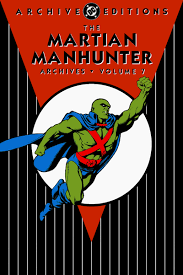
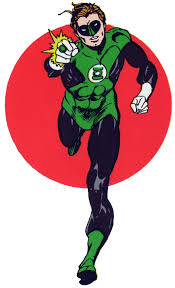
The renewed popularity of superheroes, including the characters of the “First Heroic Age” led to a bonanza of DC merchandising, toys, and eventually a small screen adaptation of Batman as well. Starring Adam West and Burt Ward as the caped crusader and his trusty sidekick, Robin, Batman ran for five seasons on ABC from 1966 - 1971. Considered the network’s biggest challenge at the time to the domination of NBC’s popular, cerebral behemoth Star Trek, Batman broke new ground with its campy nature, morally simplistic tone, upbeat theme music, and humorous dialogue. Never attempting to be high brow, the show instead was dorky, self-aware, and fun, with strong influence from the ongoing counter-culture movement in its colorful visuals and sexy female characters (both Yvonne Craig as Batgirl/Barbara Gordon and Ann Margret as Poison Ivy/Pamela Isley would be seen as major sex symbols and pioneers for female superhero characters throughout the late 60’s and beyond). The show was also popular enough to yield two full-length feature films, the first released in 1966 to introduce the series and the second in 1971 to help wrap it up. Both Batman (the film) and Batman II: Return of the Caped Crusaders (which featured Star Trek star William Shatner as the villainous Harvey Dent/Two Face) received mixed reviews but were commercial successes and turned West, Burt Ward, and Yvonne Craig, into minor motion picture stars in their own right. Fondly remembered today for its silliness, Batman may not have been a favorite of President Kennedy’s like Star Trek, but it was beloved by millions the nation over and helped pave the way for higher budget, more thoughtful superhero adaptations to come.
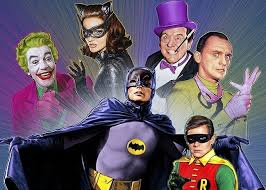
DC Comics sparked the return of superheroes to popularity in the late 1950’s and 1960’s, this much cannot be denied. But their work of the time often relied on Batman-esque morality and simple characterization while marketing to its mostly young audience. DC was forever reluctant to change its winning formula and was thus outmaneuvered to some degree in the shifting counter-cultural sands of the 1960’s by another comic company on its way up: Marvel Comics. Captained by Editor and chief writer Stan Lee, Marvel seized on the newfound popularity enjoyed by superheroes and revived interest in the genre further with more sophisticated storytelling and characterization. In contrast to DC and comics of previous eras, Marvel characters were written by Lee to be “flawed, self-doubting, and humanlike” - very much like the members of their readership in every way except for their amazing abilities. Hoping to expand on the example set by the Justice League, Lee and artist Jack Kirby created the Fantastic Four, a superhero team of family members and close acquaintances, who unlike the Justice League often quarreled and developed complex interpersonal relationships with one another. The Fantastic Four #1 released in November of 1961, changed the comic book industry forever with a novel innovation: naturalistic storytelling featuring characters with human foibles, failings, and worries as simple as paying rent money. In contrast to DC’s more traditional, strait-laced heroes, these new Marvel characters ushered in a revolution. As much, if not more of a smash hit than the Justice League, the Fantastic Four led to a myriad of new characters from Stan Lee and artists/co-plotters Jack Kirby and Steve Ditko. Channeling the new look of “Pop Art” created by Andy Warhol and others in the 60s, Kirby, Ditko, Don Heck, and others joined their dynamic artwork to Lee’s catchy, colorful prose to create a new wave of icons for fans young and old to enjoy. Captain America, a First Heroic Age character originally created by Kirby and Joe Simon back in 1941 as a symbol of American pride and values on the eve of World War II, was resurrected and reimagined by Lee and Kirby as awakening from a decades long slumber in suspended animation in arctic ice, only to have his idealism and heroism challenged by a darker, more morally complex world around him. This version of Cap would go on to lead another superhero team: the Avengers, and became a favorite of President Kennedy’s, as well as millions of others across the country. He would be joined by: Bruce Banner/the Incredible Hulk, a gargantuan, green anti-hero inspired by Mary Shelley’s Frankenstein and Lee’s own fascination with the possible implications of atomic energy; Iron Man/Tony Stark, Marvel’s billionaire playboy/technological genius answer to Bruce Wayne and master of the wisecrack; The Mighty Thor, a Norse God who is punished by his father and must learn to live among mere mortals on Earth; and of course, Lee and Ditko’s most enduring and popular creation: Peter Parker/Spider-Man, the first superhero whose alter-ego was an average teenager, just like most of Lee’s audience.
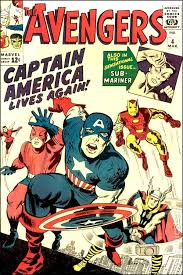
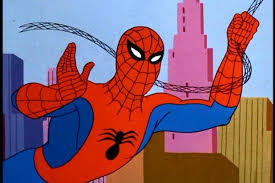
These creations were joined in late 1963 by “The Mutants”, a group of superheroes trained by the powerful telepath Professor Charles Xavier, and who did not get their powers through a freak accident or magic… they were born with them. Stan Lee and Jack Kirby would later claim that they were only doing the “natural thing” by having a team of “differently born” heroes work together for the betterment of all humanity, but various “out” groups in society, especially homosexuals, minorities, and individuals with disabilities would go on to claim that the Mutants were a big inspiration to them, and helped them form a sense of positive identity in a world that was trying to tell them they were somehow less because they were different. The Mutants, the Avengers, Spider-Man, and Marvel’s other heroes became increasingly popular throughout the 60’s with high school and college students, who felt they could identify with the angst and irreverent humor of a character like Spider-Man. Comics historian Peter Sanderson would later compare DC in the 1960’s to a large Hollywood studio, and argue that after having reinvented the superhero archetype, DC by the latter part of the decade was suffering from a mild but noticeable creative drought. The audience for comics was no longer just children, and Sanderson saw Marvel in the 1960’s as the comic equivalent of the French New Wave in art, developing new methods of storytelling that drew in and retained readers who were in their teens and older and thus influencing the comics writers and artists of the future.
Cyclops - AKA Samuel Summers (who is black ITTL, a test pilot, and the son of a "Tuskegee Airman", Christopher Summers who served in WWII), the archetypal American hero and leader of the team. His mutation is the ability to emit powerful energy beams from his eyes, which he controls with special eye-ware. Having a black character as the leader of a superhero team was a huge step forward for Marvel and its audience, but with the Kirk-Uhura kiss in Star Trek, this isn't too big of a leap to take for TTL.
Marvel Girl - AKA Jean Grey, a caring, nurturing "group mom" who also has impressive, powerful powers of telepathy and telekinesis. She will later discover that she is also a physical manifestation of the mysterious and terrifying "Phoenix Force".
Beast - AKA Henry "Hank" McCoy, a mutant possessing ape-like superhuman physical strength and agility, as well as genius level intellect, he is the "big guy" and the "smart guy" of the group simultaneously. ITTL he is named as a tribute to Dr. McCoy on Star Trek.
Angel - AKA Wendy Worthington, a mutant possessing a large pair of feathered wings, protruding from her back, which enable her to fly. The heiress to a multi-million dollar fortune, Wendy's privileged background often stereotype her as self-absorbed and unable to deal with hardships. Her character development largely sees Professor Xavier help her grow out of this attitude and toward something more accepting and welcoming of others.
Iceman - AKA Bobby Drake, a mutant with the ability to manipulate ice and cold by freezing water vapor around him. An early, very controversial arc of the comics (published around 1970) had Jean and Wendy both ask Bobby on a date, trying to settle a bet on which one of them he liked more. In reality, it is later revealed that he doesn't like either of them as anything but friends, and he is in fact, gay. He becomes the first openly homosexual character in comic books, and causes Marvel to have issues with the Comics Code Authority very early ITTL.

Though the true golden age of superhero movies lay several years in the future, the genre was pioneered in the 1970’s, with a handful of films of varying quality that may not stand the test of time overly well but nonetheless created a blueprint which would be often imitated in the decades to come. By leaps and bounds, the most successful of the 1970’s early superhero flicks was 1978’s Superman. Directed by arguably Hollywood’s biggest rising star, Steven Spielberg, and starring a debuting Christopher Reeve as the titular “Man of Steel”, Carrie Fisher as his “liberated, hard-nosed, and witty” love interest Lois Lane, and Dennis Hoffman as the nefarious villain Lex Luthor, and featuring the beautiful scoring of John Williams, the film is still widely hailed as one of the best in the genre’s now-storied history. Reeve leads the rest of the cast in what The New York Times described at the time as a “brilliant performance full of heart and authenticity… as though lifted straight out of a comic book, with all the movie magic kept intact.” Fisher, hot on the heels of her success opposite Mark Hamill and Harrison Ford in another major blockbuster the year before, was becoming a skyrocketing new star in Hollywood as well. There were hints, rumors, and tabloid speculation around a possible off-screen romance between Fisher and her co-star, Reeve, which only served to help the film’s ticket sales, and were ultimately confirmed in 1983 when the two married in a beautiful private ceremony in Los Angeles (with Fisher’s American Graffiti co-star and close friend Mark Hamill serving as best man). Spielberg, for his part would always consider the film to be among his favorite projects. He returned to work on the sequel: Superman II in 1980, before ultimately passing the torch to his friend Robert Zemeckis, who made his directorial debut with the series’ third and final entry, the critically acclaimed Superman III in 1983. That same year, Spielberg used his newfound freedom to team up with another friend, George Lucas, as well as the aforementioned Fisher to complete another famous movie trilogy which would change sci-fi and the world, forever...
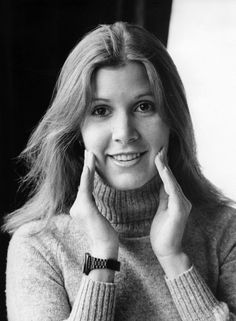
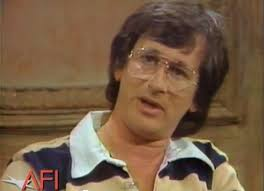
Contrary to popular belief, Superman was not the first DC hero to be given the big screen treatment in the 1970’s. Three years earlier in 1975, DC made its first foray into “serious” feature films with Wonder Woman, piloted by director Richard Donner and starring singer/songwriter/model Lynda Carter in the titular role. The film codified many of what would become classic tropes in the superhero genre, beginning with Wonder Woman’s origin story as Diana, Princess of the Amazons, and following how she came into contact with the rest of the world through her eventual friend and love interest Steve Trevor, an American fighter pilot in World War II (played by Burt Reynolds). Though the film was not especially well received, earning mostly tepid reviews and barely breaking even at the box office, Warner Brothers Studios felt confident enough in its performance to greenlight Superman and eventually purchase the rights to make movies about other DC characters. Reynolds called the film “a largely forgettable experience”, but Carter disagreed, saying that she loved her first major role and that she would “jump at the chance to reprise the part, if it arose.” Arise it did. First in 1977 with a television series on ABC which ran for four seasons, then again in 1983, when Diana/Wonder Woman appeared in Superman III as an ally to Christopher Reeve’s Man of Steel in his fight against the alien mastermind Brainiac (portrayed by comedian Richard Pryor). That film raised eyebrows by hinting that Wonder Woman had feelings for Superman, a fact complicated by the latter’s marriage to Lois Lane at the end of Superman II. These feelings would remain unresolved and rear their head again in a post-credits scene at the end of 1984’s Batman, where Superman and Wonder Woman’s names are shown on a business card handed to Bruce Wayne by Alfred, accompanied by the phrase: “For Justice”.

The year after, 1984, brought the third film of the burgeoning “DC comics cinematic universe”: Batman. Piloted by debuting director and animation expert Tim Burton, the film was a smash live-action hit. Originally pitched in the late 70’s after the success of Superman, Producer Michael E. Uslan wanted to create a film which would “make the definitive, dark, serious version of Batman, the way Bob Kane and Bill Finger had imagined him in his 1939 debut. A creature of the night; stalking criminals in the shadows.” After the conclusion of the 60’s TV show, the caped crusader’s popularity with comic book fans and the public at large was waning. The kids who had grown up with Adam West’s portrayal of the character now found him goofy, uninteresting, and one-dimensional, while older fans of the original comics felt that there was little chance of seeing their Batman ever again. Both were proven wrong when the film was ultimately released to rave reviews and record setting box office returns. Burton’s highly stylized, gothic vision for the superhero was a stark contrast to Adam West’s take, not to mention the bright, star-spangled film treatment Superman had received in his trilogy as well. Oingo Boingo’s lead singer Danny Elfman was recruited by Burton to bring a “new kind” of scoring to the film, which gave pop culture Batman’s iconic theme. Many still hear Elfman’s theme as soon as they think of the character today. Starring Shakespearean actor and relative unknown at the time Kevin Conroy as Bruce Wayne/Batman; Kiefer Sutherland as Dick Grayson/Robin; Do Androids Dream of Electric Sheep? co-star Sean Young as Vicki Vale, a Gotham City journalist and Wayne’s love interest; Billy Dee Williams as Harvey Dent; Tom Skerritt as Police Commissioner Gordon; and the titanically talented Mark Hamill (one of the biggest stars in Hollywood after his run in Star Wars) as Batman’s arch-nemesis, the Joker, the film redefined the character for a new generation of fans and helped usher in a developing genre of cinema as well: the neo-noir thriller, of which Conroy was considered a pioneering star. Hamill’s Joker also received considerable praise for his perfect balance of maniacal humor and grim, psychological villainy in what is still seen by many as the definitive interpretation of the role. As DC’s films earned massive profits for Warner Brothers and took the pop cultural landscape by storm, Marvel Comics began to look to their own intellectual property and debate which should be taken to the big and small screens…

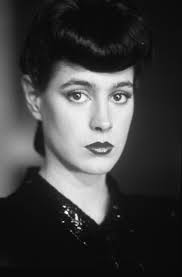

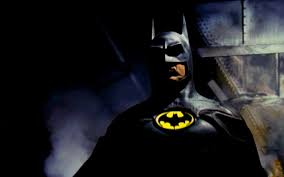
Chapter 79: Baby, Don’t Get Hooked On Me - The Second Heroic Age of Comic Books
Above: Stanley Martin Lieber, better known by his pen and eventual legal name, Stan Lee, was one of the foremost writers and architects of the “Second Heroic Age” of Comics which ran roughly from 1956 - 1976.
In the aftermath of World War II, the popularity and circulation of comic books centered on superheroes began to experience a sharp decline. Heroes like the immortal Captain America and Superman who once dominated print pages and captivated the imaginations of young people across the country were afterward replaced in large part by dark, intrigue infused stories of crime and horror through the 1940’s and 50’s. Over time however, controversy began to arise as concerned parents’ groups and the media started to allege links between crime and horror comics and a rise in juvenile delinquency. The 1954 introduction of the Comics Code Authority to “regulate” the content of comics books may now seem like an antiquated exercise in McCarthyite censorship, but at the time it was taken as absolute serious business. In the wake of these developments, publishers began to venture back into the stupendous world of superheroes, a change which began with the publication of a new version of DC’s character the Flash in October of 1956. Initially skeptical of how successful superheroes could be after years in the relative wilderness, DC was completely caught off guard when the Flash became a big hit. In response, the company began to feverishly pump out story after story centering on old classics like Superman, Batman, and Wonder Woman, as well as their collaborative team: the Justice League of America. This shift in the industry: back toward the superhero genre and under the watchful eye of the CCA, led to the perception that a new era in comics had begun: it would be dubbed “the second heroic age”.
More than simply a return in popularity for superheroes, the Second Heroic Age also marked several other crucial changes in comics. DC Editor Julius Schwartz, who was largely to thank for the revitalization of the Flash in ‘56, was also a great fan of science-fiction, such as the works of Ray Bradbury, and strove to include more sci-fi elements in his company’s stories. It was during this period that science would overtake magic and religion as the source for superheroes’ powers, for instance. This change seemed natural, especially in an age which was rapidly becoming obsessed with the wondrous potential of science, especially in the field of atomic energy. Schwartz himself even became the inspiration for a re-imagined Green Lantern. A character from the First Heroic Age, railroad engineer Alan Scott possessed a ring powered by a magical lantern. His new Second Heroic Age replacement, Hal Jordan however, was a test pilot with a ring powered by an alien battery and created by an intergalactic police force. Another new DC character from the era was “The Manhunter from Mars”, one of the original members of the Justice League and ultimately one of the most powerful beings in the expanded DC Universe. This trend toward alien life in comics would only be further bolstered by the popularity of programs like Star Trek and the joint U.S. - Soviet mission to the Moon near the end of the decade.
The renewed popularity of superheroes, including the characters of the “First Heroic Age” led to a bonanza of DC merchandising, toys, and eventually a small screen adaptation of Batman as well. Starring Adam West and Burt Ward as the caped crusader and his trusty sidekick, Robin, Batman ran for five seasons on ABC from 1966 - 1971. Considered the network’s biggest challenge at the time to the domination of NBC’s popular, cerebral behemoth Star Trek, Batman broke new ground with its campy nature, morally simplistic tone, upbeat theme music, and humorous dialogue. Never attempting to be high brow, the show instead was dorky, self-aware, and fun, with strong influence from the ongoing counter-culture movement in its colorful visuals and sexy female characters (both Yvonne Craig as Batgirl/Barbara Gordon and Ann Margret as Poison Ivy/Pamela Isley would be seen as major sex symbols and pioneers for female superhero characters throughout the late 60’s and beyond). The show was also popular enough to yield two full-length feature films, the first released in 1966 to introduce the series and the second in 1971 to help wrap it up. Both Batman (the film) and Batman II: Return of the Caped Crusaders (which featured Star Trek star William Shatner as the villainous Harvey Dent/Two Face) received mixed reviews but were commercial successes and turned West, Burt Ward, and Yvonne Craig, into minor motion picture stars in their own right. Fondly remembered today for its silliness, Batman may not have been a favorite of President Kennedy’s like Star Trek, but it was beloved by millions the nation over and helped pave the way for higher budget, more thoughtful superhero adaptations to come.
DC Comics sparked the return of superheroes to popularity in the late 1950’s and 1960’s, this much cannot be denied. But their work of the time often relied on Batman-esque morality and simple characterization while marketing to its mostly young audience. DC was forever reluctant to change its winning formula and was thus outmaneuvered to some degree in the shifting counter-cultural sands of the 1960’s by another comic company on its way up: Marvel Comics. Captained by Editor and chief writer Stan Lee, Marvel seized on the newfound popularity enjoyed by superheroes and revived interest in the genre further with more sophisticated storytelling and characterization. In contrast to DC and comics of previous eras, Marvel characters were written by Lee to be “flawed, self-doubting, and humanlike” - very much like the members of their readership in every way except for their amazing abilities. Hoping to expand on the example set by the Justice League, Lee and artist Jack Kirby created the Fantastic Four, a superhero team of family members and close acquaintances, who unlike the Justice League often quarreled and developed complex interpersonal relationships with one another. The Fantastic Four #1 released in November of 1961, changed the comic book industry forever with a novel innovation: naturalistic storytelling featuring characters with human foibles, failings, and worries as simple as paying rent money. In contrast to DC’s more traditional, strait-laced heroes, these new Marvel characters ushered in a revolution. As much, if not more of a smash hit than the Justice League, the Fantastic Four led to a myriad of new characters from Stan Lee and artists/co-plotters Jack Kirby and Steve Ditko. Channeling the new look of “Pop Art” created by Andy Warhol and others in the 60s, Kirby, Ditko, Don Heck, and others joined their dynamic artwork to Lee’s catchy, colorful prose to create a new wave of icons for fans young and old to enjoy. Captain America, a First Heroic Age character originally created by Kirby and Joe Simon back in 1941 as a symbol of American pride and values on the eve of World War II, was resurrected and reimagined by Lee and Kirby as awakening from a decades long slumber in suspended animation in arctic ice, only to have his idealism and heroism challenged by a darker, more morally complex world around him. This version of Cap would go on to lead another superhero team: the Avengers, and became a favorite of President Kennedy’s, as well as millions of others across the country. He would be joined by: Bruce Banner/the Incredible Hulk, a gargantuan, green anti-hero inspired by Mary Shelley’s Frankenstein and Lee’s own fascination with the possible implications of atomic energy; Iron Man/Tony Stark, Marvel’s billionaire playboy/technological genius answer to Bruce Wayne and master of the wisecrack; The Mighty Thor, a Norse God who is punished by his father and must learn to live among mere mortals on Earth; and of course, Lee and Ditko’s most enduring and popular creation: Peter Parker/Spider-Man, the first superhero whose alter-ego was an average teenager, just like most of Lee’s audience.
These creations were joined in late 1963 by “The Mutants”, a group of superheroes trained by the powerful telepath Professor Charles Xavier, and who did not get their powers through a freak accident or magic… they were born with them. Stan Lee and Jack Kirby would later claim that they were only doing the “natural thing” by having a team of “differently born” heroes work together for the betterment of all humanity, but various “out” groups in society, especially homosexuals, minorities, and individuals with disabilities would go on to claim that the Mutants were a big inspiration to them, and helped them form a sense of positive identity in a world that was trying to tell them they were somehow less because they were different. The Mutants, the Avengers, Spider-Man, and Marvel’s other heroes became increasingly popular throughout the 60’s with high school and college students, who felt they could identify with the angst and irreverent humor of a character like Spider-Man. Comics historian Peter Sanderson would later compare DC in the 1960’s to a large Hollywood studio, and argue that after having reinvented the superhero archetype, DC by the latter part of the decade was suffering from a mild but noticeable creative drought. The audience for comics was no longer just children, and Sanderson saw Marvel in the 1960’s as the comic equivalent of the French New Wave in art, developing new methods of storytelling that drew in and retained readers who were in their teens and older and thus influencing the comics writers and artists of the future.
The First Class of the Mutants
Cyclops - AKA Samuel Summers (who is black ITTL, a test pilot, and the son of a "Tuskegee Airman", Christopher Summers who served in WWII), the archetypal American hero and leader of the team. His mutation is the ability to emit powerful energy beams from his eyes, which he controls with special eye-ware. Having a black character as the leader of a superhero team was a huge step forward for Marvel and its audience, but with the Kirk-Uhura kiss in Star Trek, this isn't too big of a leap to take for TTL.
Marvel Girl - AKA Jean Grey, a caring, nurturing "group mom" who also has impressive, powerful powers of telepathy and telekinesis. She will later discover that she is also a physical manifestation of the mysterious and terrifying "Phoenix Force".
Beast - AKA Henry "Hank" McCoy, a mutant possessing ape-like superhuman physical strength and agility, as well as genius level intellect, he is the "big guy" and the "smart guy" of the group simultaneously. ITTL he is named as a tribute to Dr. McCoy on Star Trek.
Angel - AKA Wendy Worthington, a mutant possessing a large pair of feathered wings, protruding from her back, which enable her to fly. The heiress to a multi-million dollar fortune, Wendy's privileged background often stereotype her as self-absorbed and unable to deal with hardships. Her character development largely sees Professor Xavier help her grow out of this attitude and toward something more accepting and welcoming of others.
Iceman - AKA Bobby Drake, a mutant with the ability to manipulate ice and cold by freezing water vapor around him. An early, very controversial arc of the comics (published around 1970) had Jean and Wendy both ask Bobby on a date, trying to settle a bet on which one of them he liked more. In reality, it is later revealed that he doesn't like either of them as anything but friends, and he is in fact, gay. He becomes the first openly homosexual character in comic books, and causes Marvel to have issues with the Comics Code Authority very early ITTL.
…
Though the true golden age of superhero movies lay several years in the future, the genre was pioneered in the 1970’s, with a handful of films of varying quality that may not stand the test of time overly well but nonetheless created a blueprint which would be often imitated in the decades to come. By leaps and bounds, the most successful of the 1970’s early superhero flicks was 1978’s Superman. Directed by arguably Hollywood’s biggest rising star, Steven Spielberg, and starring a debuting Christopher Reeve as the titular “Man of Steel”, Carrie Fisher as his “liberated, hard-nosed, and witty” love interest Lois Lane, and Dennis Hoffman as the nefarious villain Lex Luthor, and featuring the beautiful scoring of John Williams, the film is still widely hailed as one of the best in the genre’s now-storied history. Reeve leads the rest of the cast in what The New York Times described at the time as a “brilliant performance full of heart and authenticity… as though lifted straight out of a comic book, with all the movie magic kept intact.” Fisher, hot on the heels of her success opposite Mark Hamill and Harrison Ford in another major blockbuster the year before, was becoming a skyrocketing new star in Hollywood as well. There were hints, rumors, and tabloid speculation around a possible off-screen romance between Fisher and her co-star, Reeve, which only served to help the film’s ticket sales, and were ultimately confirmed in 1983 when the two married in a beautiful private ceremony in Los Angeles (with Fisher’s American Graffiti co-star and close friend Mark Hamill serving as best man). Spielberg, for his part would always consider the film to be among his favorite projects. He returned to work on the sequel: Superman II in 1980, before ultimately passing the torch to his friend Robert Zemeckis, who made his directorial debut with the series’ third and final entry, the critically acclaimed Superman III in 1983. That same year, Spielberg used his newfound freedom to team up with another friend, George Lucas, as well as the aforementioned Fisher to complete another famous movie trilogy which would change sci-fi and the world, forever...
Contrary to popular belief, Superman was not the first DC hero to be given the big screen treatment in the 1970’s. Three years earlier in 1975, DC made its first foray into “serious” feature films with Wonder Woman, piloted by director Richard Donner and starring singer/songwriter/model Lynda Carter in the titular role. The film codified many of what would become classic tropes in the superhero genre, beginning with Wonder Woman’s origin story as Diana, Princess of the Amazons, and following how she came into contact with the rest of the world through her eventual friend and love interest Steve Trevor, an American fighter pilot in World War II (played by Burt Reynolds). Though the film was not especially well received, earning mostly tepid reviews and barely breaking even at the box office, Warner Brothers Studios felt confident enough in its performance to greenlight Superman and eventually purchase the rights to make movies about other DC characters. Reynolds called the film “a largely forgettable experience”, but Carter disagreed, saying that she loved her first major role and that she would “jump at the chance to reprise the part, if it arose.” Arise it did. First in 1977 with a television series on ABC which ran for four seasons, then again in 1983, when Diana/Wonder Woman appeared in Superman III as an ally to Christopher Reeve’s Man of Steel in his fight against the alien mastermind Brainiac (portrayed by comedian Richard Pryor). That film raised eyebrows by hinting that Wonder Woman had feelings for Superman, a fact complicated by the latter’s marriage to Lois Lane at the end of Superman II. These feelings would remain unresolved and rear their head again in a post-credits scene at the end of 1984’s Batman, where Superman and Wonder Woman’s names are shown on a business card handed to Bruce Wayne by Alfred, accompanied by the phrase: “For Justice”.
The year after, 1984, brought the third film of the burgeoning “DC comics cinematic universe”: Batman. Piloted by debuting director and animation expert Tim Burton, the film was a smash live-action hit. Originally pitched in the late 70’s after the success of Superman, Producer Michael E. Uslan wanted to create a film which would “make the definitive, dark, serious version of Batman, the way Bob Kane and Bill Finger had imagined him in his 1939 debut. A creature of the night; stalking criminals in the shadows.” After the conclusion of the 60’s TV show, the caped crusader’s popularity with comic book fans and the public at large was waning. The kids who had grown up with Adam West’s portrayal of the character now found him goofy, uninteresting, and one-dimensional, while older fans of the original comics felt that there was little chance of seeing their Batman ever again. Both were proven wrong when the film was ultimately released to rave reviews and record setting box office returns. Burton’s highly stylized, gothic vision for the superhero was a stark contrast to Adam West’s take, not to mention the bright, star-spangled film treatment Superman had received in his trilogy as well. Oingo Boingo’s lead singer Danny Elfman was recruited by Burton to bring a “new kind” of scoring to the film, which gave pop culture Batman’s iconic theme. Many still hear Elfman’s theme as soon as they think of the character today. Starring Shakespearean actor and relative unknown at the time Kevin Conroy as Bruce Wayne/Batman; Kiefer Sutherland as Dick Grayson/Robin; Do Androids Dream of Electric Sheep? co-star Sean Young as Vicki Vale, a Gotham City journalist and Wayne’s love interest; Billy Dee Williams as Harvey Dent; Tom Skerritt as Police Commissioner Gordon; and the titanically talented Mark Hamill (one of the biggest stars in Hollywood after his run in Star Wars) as Batman’s arch-nemesis, the Joker, the film redefined the character for a new generation of fans and helped usher in a developing genre of cinema as well: the neo-noir thriller, of which Conroy was considered a pioneering star. Hamill’s Joker also received considerable praise for his perfect balance of maniacal humor and grim, psychological villainy in what is still seen by many as the definitive interpretation of the role. As DC’s films earned massive profits for Warner Brothers and took the pop cultural landscape by storm, Marvel Comics began to look to their own intellectual property and debate which should be taken to the big and small screens…
Next Time on Blue Skies in Camelot: More Pop Culture in 1972
Last edited: